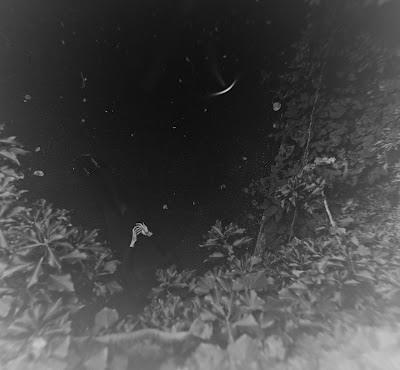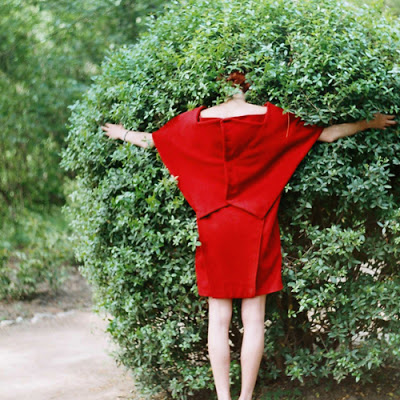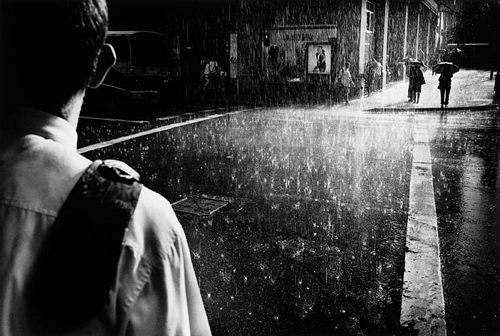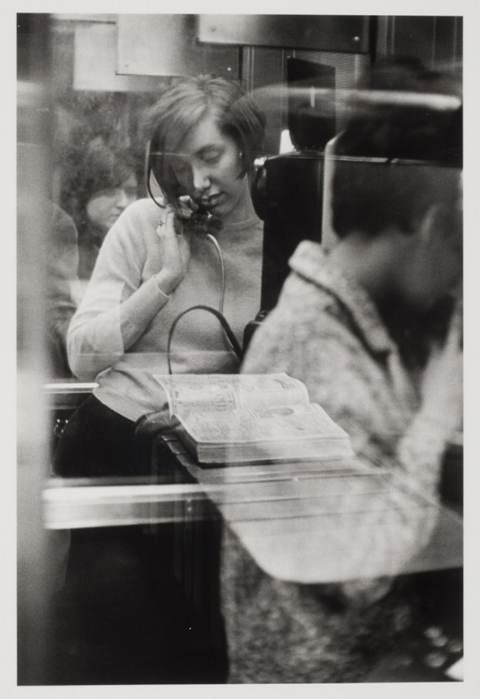Notes on a talk by Michael Stone at Centre of Gravity, Toronto, June 5, 2012
Just Die
Zen Mind, Beginner’s Mind is a collection of talks given by Shunryu Suzuki in the 1960s. Let’s boil it down like an overzealous cook. If the book were a slogan it might read: Express yourself right to the end.
Last week we did a face to face guided meditation practice where we allowed ourselves to be seen, and forgave ourselves for being seen in this way. We allowed ourselves to show what we felt moment after moment. Did anyone have any reaction shots to this during the week? Yeah, I had a dream where a group of people were helping me with my suicide. I discovered all the things I was attached to. I was trying to sit but my mind was so busy. Joan Halifax was beside me saying, “Just die. Just die.” Jung thought the most important dreams were the ones that woke us up, there was some pattern in consciousness that needed to become part of waking life. But we don’t need to put a lot of emphasis on dreams, right? No, but sometimes dreams put emphasis on us. Perhaps we have an old edit room filled with found footage and old reels, our dreams are like seeing the scraps on the edit room floor. Some organizing principle decides what consciousness can handle. We don’t need to cover over these night times with interpretation. The important ones will come knocking.
Concerns
We all have concerns and sometimes it’s hard to know what to do with them. When you have a concern it’s important that you deal with it in the right way, and that means not using the practice to work it out. Sitting meditation isn’t a place for mulling over what to do. Instead you might ask: how heavy is this? How much does this concern weigh? See if you can imagine it as a shape and ask how heavy it is. That way you’re shifting concern from the content of the concern to the way the mind holds the concern. Notice how much you’re glued to this concern, check in on your attitude towards it, see how the mind, body, heart holds that concern. We’re all deeply psychological, but bringing those operations into sitting practice isn’t helpful. It’s ironic perhaps, because most of us have come to the cushion because we have problems. And as Suzuki reminds us: you can’t have practice if you have no problems. They’re necessary for practice. But how do you work with them?
Axial Age
Axial Age is a term coined by German philosopher Karl Jaspers to describe the period from 800 to 200 BC. Jaspers argued that during the Axial Age “the spiritual foundations of humanity were laid simultaneously and independently in China, India, Persia, Judea, and Greece. And these are the foundations upon which humanity still subsists today.” All over the world cultures started developing new ways of seeing themselves. Major religions began in this period – Tao, Confucianism, Christianity, Buddhism. Many scholars have tried to explain how this happened without success. Robert Bella has come along and said that all major religions share a couple of important qualities. The first is that their claims are entirely conceptual. For instance, “being one with God or heaven.” This has so little to do with cooking beets, or how high the river is today. The second is that they all focus on the individual. Of course, Buddhists don’t like to hear this, but the whole shtick of individual enlightenment has symmetries in Christianity and Judaism. Before organized religions these conceptualizations didn’t lead groups to try to convert others. The Iroquois might have fought battles, but not because they were trying to get others to become Iroquois.
Door
When you sit on the cushion and drop underneath what you’re doing, you touch a place where forgiveness happens. Some door of generosity opens from the other side. This has nothing to do with nirvana, but in practice these ideals drop away, and someone else opens the door.
One of the things you feel while reading Suzuki’s book is that his teaching has nothing to do with Buddhism. People who practice Zen seriously are always asking: what is this all about? What are we doing? What is this practice?
Robert Bella writes that Japan is a culture of forms, it focuses so much on the vessel with nothing inside. They take all that Chinese Buddhism and turn it into something distinctly Japanese. When you feel Suzuki talking you feel this Japanese way of feeling life that has nothing to do with Buddhism. Beginner’s mind has nothing to do with religion but has everything to do with having a religious feeling for life. To maintain that we create scaffolding of bowing and lighting incense – and understand that these are mundane practices. Breast feeding and brushing our teeth are the most sacred practices.
Suzuki: “Because Buddha was the founder of the teaching, people tentatively called his teaching ‘Buddhism,’ but actually Buddhism is not some particular teaching. Buddhism is just Truth, which includes various truths in it. Zazen practice is the practice which includes the various activities of life. So actually, we do not emphasize the sitting posture alone. How to sit is how to act. We study how to act by sitting, and this is the most basic activity for us. That is why we practice zazen in this way. Even though we practice zazen, we should not call ourselves the Zen school. We just practice zazen, taking our example from Buddha; that is why we practice. Buddha taught us how to act through our practice; that is why we sit.
To do something, to live in each moment, means to be the temporal activity of Buddha, To sit in this way is to be the Buddha himself, to be as the historical Buddha was. The same thing applies to everything we do. Everything is Buddha’s activity. So whatever you do, or even if you keep from doing something, Buddha is in that activity. Because people have no such understanding of Buddha, they think what they do is the most important thing, without knowing who it is that is actually doing it. People think they are doing various things, but actually Buddha is doing everything. Each one of us has his own name, but those names are the many names of one Buddha. Each one of us has many activities, but those activities are all Buddha’s activities. Without knowing this, people put emphasis on some activity. When they put emphasis on zazen, it is not true zazen. It looks as if they were sitting in the same way as Buddha, but there is a big difference in their understanding of our practice. They understand this sitting posture as just one of the four basic postures of man, and they think: “I now take this posture.” But zazen is all the postures, and each posture is Buddha’s posture. This understanding is the right understanding of the zazen posture. If you practice in this way, it is Buddhism. This is a very, very important point.”
Feel vs See
When the Buddha talks about sitting practice he uses two sets of verbs. One has to do with seeing or watching. The other with feeling or touching. When you read some of his basic meditation instructions one of the things you notice is that verbs of sensation and feeling far outnumber verbs of seeing. He speaks more about feeling one’s experience, that’s why you’re not watching breath during sitting practice, you’re becoming the breath. These days the language of mindfulness practice so often asks us to witness experience, but that’s conceptualization, that’s the trap of religion again. We need to go past that and become the breath.
Anger
How do we work with anger? Be angry! There should be a book called Be Angry Now! I’ll have to talk to Ram Dass about it. Some are under expressers and some are over expressers. How can you be angry selflessly? To be so angry that there’s no self left in it? The religion of anger is describing it, instead of being it. If you can’t get angry then you’re not practicing anger. Thich Nhat Hanh says that when you’re angry don’t say anything, go for a walk and think about the person you think you’re angry at. There’s a well known story about a therapist who sits next to Thich on a plane. She advises her patients to hit a pillow when they get angry. He says to her, “What about the pillow?” If I had any hair I’d tear it out. We need to be able to express our anger without hurting anyone, to take care of our anger. When you’re sad, you’ve got to be really sad. It’s hard for kids when they never see you sad, or angry, if those emotions aren’t shared then they won’t know how to hold them for themselves.
Question
Suzuki asks us: how can you be in your practice without any idea of what your practice is?
Maybe right now you have a concern that’s eating you. Looking for another slice of advice when you have to go underneath all that to the place where you know what to do. The place where you’re scared or angry. Maybe you’ve been avoiding feeling that, that is beginner’s mind. As Suzuki reminds us: when you touch the place of beginner’s mind all the precepts look after themselves. Ethics arise. Are we looking for advice instead of feeling our way into a new ground? When I asked her for advice recently Roshi Pat O’Hara sent me a card which showed an activist doing sitting meditation facing a blank wall. The caption read: Occupy the wall.
The breath expands on the inhale like an accordion, and in its expansion it unveils images, thoughts, stories. And then they close in the exhale. As you breath in you’re creating new patterns, the fan opens and the fan closes. Some of these patterns stick around, they replicate, they can become a concern even. A habit pattern. You can notice that and stay with the breath. When you’re done go have a croissant. Or suck your thumb.




